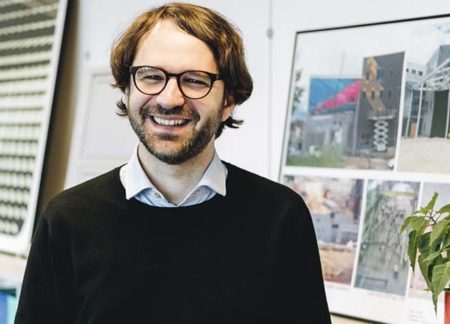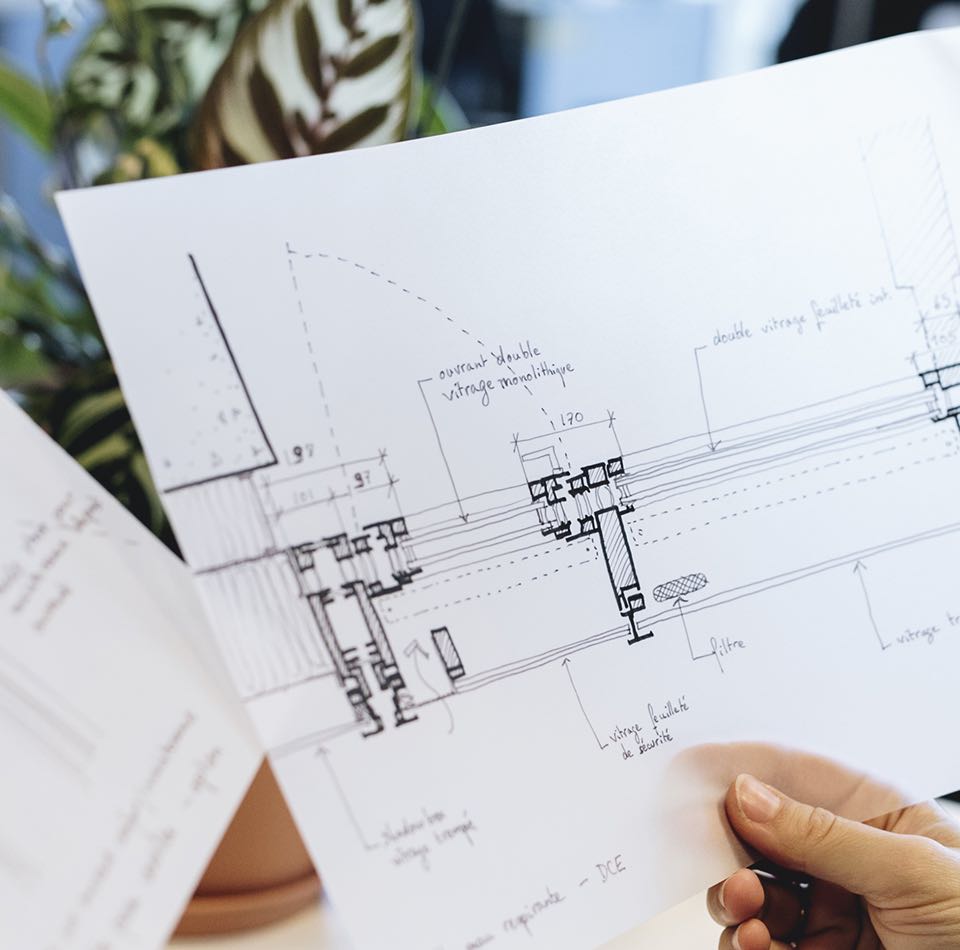How facade engineering can guarantee energy efficiency and reduce the carbon footprint?

The envelope is a major factor in the architectural expression of the project, but it is also an item that plays an essential role in the comfort and well-being of users. The envelope delineates the external environment, affected by weather conditions, from the interior environment in which we live and work. It is a selective border which allows us to regulate the external environment (bad weather, solar irradiation, temperature variations, noise, etc.) with artificial conditions that we need for our comfort.
Just like the skin of living beings, the envelope must make it possible to maintain temperatures that are relatively constant and independent from climate -related variations and radiation from the sun.
As the point at which architectural and functional constraints converge, the design of envelopes requires a holistic approach drawing on a wide range of physical knowledge, from fluid statics to mechanics, heat transfer and optical aspects.
How can facade engineering guarantee energy efficiency?
The envelope lies at the centre of the strategy relating to energy and heat transfer between the external environment and the interior atmosphere.
The performance characteristics of the facade help to regulate and adjust the fundamental heat transfers of conduction, convection and radiation.
The envelope must be selective: it must allow rays of light to penetrate the interior spaces as far as possible but it must also reduce solar heating in the summer.
Today, people design facades in the aim of achieving excellent thermal performance results, most notably with regard to insulation, natural light and management of solar irradiation.
Joining forces with the energy and environment department at Elioth is a way of generating true synergies. Its proficiency in solutions that can calculate and simulate complex physical phenomena can help in the development of innovative strategies such as the optimisation of natural light, the study and optimisation of solar protection geometry, the evaluation of the principle of natural ventilation and their resulting temperatures. The team’s technical skills and innovation make it possible to interpret and translate physical concepts into constructive details whilst also complying with architectural needs.
Tomorrow, the envelope must evolve, and we should see a new paradigm emerging. Facades today are passive, static: they have little or no ability to adapt to thermal needs, to breathe or to self regulate. Therefore, we are working to make them become smarter so that they can react naturally to climate-related requirements, placing focus on low-tech approaches and energy self-sufficiency.
The facade could become an integrated regulator much like our skin, with systems that could make it become more opaque or reflective during sunny summer days or, on the contrary, allow as much solar energy as possible to penetrate during the winter to naturally heat the interior space. With varying degrees of porosity to air, it could allow the premises to be naturally ventilated or store energy using solar collectors or state-changing materials.
This is an area in which fresh ideas must be contributed. Elioth has already begun the process through research projects such as the Clip’n’Clim module, but we are striving to develop this thought process even further. Energy optimisation tools should enable us to go further and develop innovative and dynamic solutions.


How can you guarantee a lower carbon footprint?
Among many options, we can focus on the choice of materials.
The carbon footprint of materials used in the design of the facade and their ability to sequester carbon, the recyclability and the deconstruction of items making up the envelope, and the development and use of new materials are all areas in which we are active.
Facades today are mainly made up of two materials: glass and aluminium, both of which have a high carbon footprint. The irony of this is that aluminium is one of the most highly heat conductive materials. Even though this weakness is partly compensated by the use of thermal breaks, it is time to start approaching facades in a different way, by using materials that have properties that lend themselves to heat insulation and whose production is low in grey energy and environmentally friendly. The advantage of aluminium, however, is that it can be infinitely recycled, and yet despite this, we continue producing new aluminium.
Elioth strongly believes in a revolution in material use. Instead of aluminium, we should for example promote the use of wooden modules which have better heat insulation properties, and even extend this to curtain walls. Benefits: this material stores carbon but it is also less of a conductor than aluminium and therefore offers better heat energy performances. Its production is much more environmentally friendly.
We can also :
- Use composite materials (fibreglass and resin) which provide solutions for facades that are less carbon intensive, more effective and lighter weight.
- Recover and transfer solar energy into usable energy (electricity, hot water, heat storage, etc.).
- Reduce energy consumption by employing active systems that can reduce solar irradiation in the summer (less need for air conditioning) and maximising solar irradiation in the winter (less need for heating).
- Promote positive energy constructions.
- Promote natural ventilation of buildings using facades by finding strategies that use pressure and depression points resulting from the flow of air around buildings.
- Improve the thermal characteristics of buildings whilst optimising the use of the quantity of material and reducing grey energy.
- …
The team brings together engineers and architects to deliver facade projects which are considered complex in terms of design, scale, technological level or low carbon ambition.



